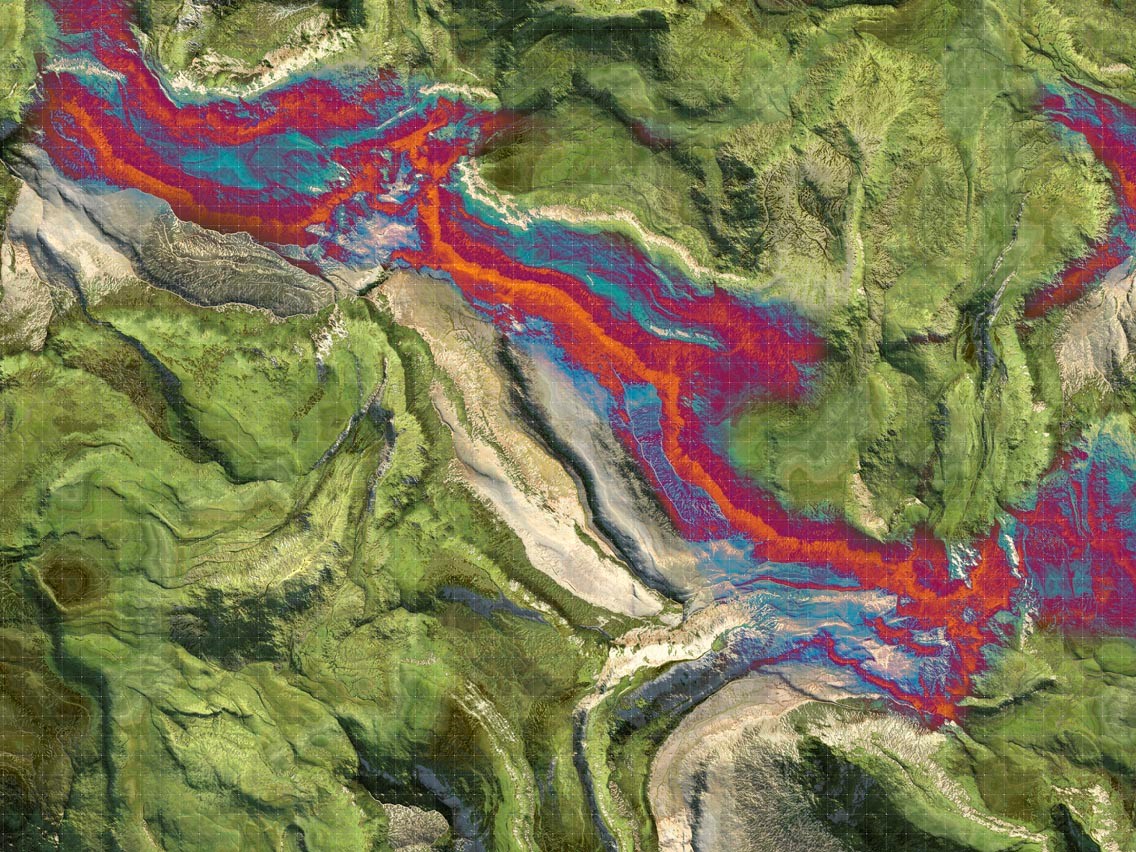Artificial intelligence (AI) is revolutionizing industries and capturing imaginations worldwide. It’s making waves in facial recognition, chatbots, and now it is emerging as a tool to address climate change. Scientists and engineers are utilizing the power of AI to develop innovative solutions designed to protect our planet. IBM and NASA, for example, collaborated to create an open-source geospatial foundation model to estimate past floods and wildfires, map urban heat islands, and monitor reforestation efforts. Building on this success, they also developed a new foundation model tailored for weather and climate applications, aiming to enhance speed, accuracy, and accessibility. The application includes helping climate experts identify conditions conducive to wildfires, and predicting extreme events like hurricanes and droughts. This is exciting as it’s the largest geospatial model and the first open-source AI foundation model built. According to IBM it can “analyze geospatial data up to four times faster than state-of-the-art deep-learning models.”
AI and Climate Change
AI has the potential to transform our understanding of climate systems, aiding accurate forecasting and modeling. The Science, Technology, and Innovation (STI) Forum notes that Artificial Intelligence can benefit small-scale farmers in the Global South by helping them reduce waste, and adapt to challenges like extreme weather events. AI also supports the transition to clean energy by enhancing efficiency, balancing supply and demand in smart grids, identifying disaster-prone areas, and facilitating targeted relief efforts, ultimately revolutionizing our approach to climate change.
In a Forbes article “AI To Address Global Challenges Like Climate Change,” Bernard Marr, who is also the author of “Generative AI in Practice,” outlines various ways in which AI can address climate change. A few specific examples Bernard Marr shares include, disaster prediction, ecosystem monitoring, and carbon capture. For climate modeling, scientists may use AI to enhance the efficiency of models that study planetary changes and predict future climates. This is because machine learning algorithms process vast amounts of data, identifying patterns that may go unnoticed by humans. Another example is AI-driven smart grid management, optimizing energy consumption and reducing waste. By controlling electricity generation, distribution, and consumption, smart grids use real-time data analysis from sensors and smart meters to detect patterns. They also oversee distributed energy resources, such as solar panels and energy storage systems, to prevent potential overloads or blackouts.
Renewable energy integration, particularly with wind and solar power, is essential for reducing greenhouse gas emissions. AI assists by improving the operation of these energy systems through the analysis of weather patterns, energy generation forecasting, and ensuring a stable energy supply. In the context of carbon capture, an approach to reduce CO2 emissions, AI assists scientists in optimizing the design of technologies for capturing emissions before release. Thus, making these technologies more efficient and cost-effective in minimizing CO2 release, is a significant contributor to global warming.
AI is also instrumental in disaster prediction, where meteorologists and climate scientists use it to forecast the effects of natural disasters like hurricanes, floods, and wildfires. Through AI, scientists analyze large datasets to identify trends indicating the likelihood of upcoming disasters, enabling the development of early warning systems to mitigate the loss of life and destruction. And finally, ecosystem monitoring benefits from AI-powered tools that track ecosystems through the processing of large quantities of data from satellite imagery and drone footage. Conservationists then employ machine learning algorithms to identify changes in land cover, species distribution, and other ecological indicators.
Artificial Intelligence Projects Helping Us Combat Climate Change
To confront the challenges presented by climate change, several innovative projects leverage the power of artificial intelligence to effectively mitigate its impacts. Here are a few examples:
- Cloud to Street, headquartered in New York, employs satellite technology and artificial intelligence to monitor floods in real-time across the globe. The company manages a comprehensive global flood database, providing valuable insights into flood exposure worldwide. Cloud to Street is dedicated to minimizing the risk of flooding and saving lives.
- Earth Insights, a collaboration between Hewlett Packard (HP) and Conservation International (CI), a non-profit based in Virginia, utilizes data-processing technology to oversee biodiversity loss in tropical forests globally. The primary objective is safeguarding the environment through scientific advancements and policy changes.
- The Ocean Cleanup, a non-profit organization, is focused on implementing technologies to eliminate plastic from the world’s oceans. With the goal of removing 90% of floating ocean plastic by 2040, the organization uses an AI object detection algorithm to generate scientific observations of macroplastic litter. This innovative remote-sensing approach proves more efficient than relying solely on manual and on-site observations, allowing targeted cleaning efforts in plastic concentration “hot spots.”
- Husk Power Systems provides low-cost renewable power to rural communities across South Asia and sub-Saharan Africa through solar mini-grids. Husk Power Systems was acknowledged as one of the recipients of the AI for the Planet award. This award is a recognition of their commitment to solving the energy access problem by using innovative solutions like AI and community solar mini-grids.
- Sipremo, a Brazilian-based startup dedicated to creating safe, clean, and sustainable cities, has developed an AI capable of predicting future disaster events. This predictive tool offers valuable insights on where, when, and what event may occur.
- Blue Sky Analytics, based in India, has built a data analytics platform extracting environmental intelligence from satellite imagery. It is an AI-powered infrastructure that analyzes every pixel on the planet for insights such as air quality and water pollution. The goal is to make relevant environmental information accessible worldwide, promoting healthier lives without stress or fear of danger.
- Sprout empowers farmers to adapt to climate change by offering digital protection products, including early warning systems (Sprout Alerts) and parametric insurance. These tools enable farmers to make on-farm investments in sustainable agriculture and recover from extreme weather events.
These examples serve as just a few instances showcasing how AI is alleviating the impacts of climate change.
Ethical Considerations, Challenges, and Conscious Design
It is evident that AI companies are making a big difference in the fight against climate change. However, using and training AI can create a lot of emissions. So, it’s important for AI companies to work on reducing their own emissions first.
We must also be careful against AI bias and discrimination. An ethical issue linked to using AI for addressing climate change is the risk of increasing social inequalities. AI algorithms, like any human-made tool, can perpetuate discrimination against specific groups which becomes a significant concern in the context of climate change. This is because marginalized communities are most vulnerable to climate change effects. To prevent these inequalities from exacerbating, we must ensure that AI systems are designed fairly. This means including diverse professionals and community members in the development process as well as regularly checking AI systems to identify any biases. Not only that, creating an environmentally conscious design of AI tools is important. Junhong Chen, a Professor at the Pritzker School of Molecular Engineering and lead water strategist at Argonne National Laboratory, advises companies to consider the energy-intensive nature of training, deploying, and running AI systems. He emphasizes the need to consider potential negative consequences and minimize them through thoughtful design.
AI is a powerful tool in combating climate change. However, we should strive to involve people from different backgrounds in the design and implementation process. This way, we can take the necessary steps to ensure that AI benefits everyone, rather than just a privileged few.





 Public Works Partners is a WBE/DBE-certified urban planning and consulting firm. Our expertise lies in creating innovative, equitable, and sustainable solutions to complex problems.
Public Works Partners is a WBE/DBE-certified urban planning and consulting firm. Our expertise lies in creating innovative, equitable, and sustainable solutions to complex problems.